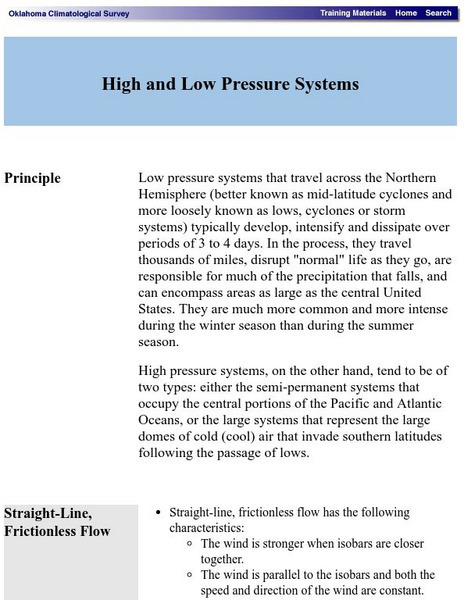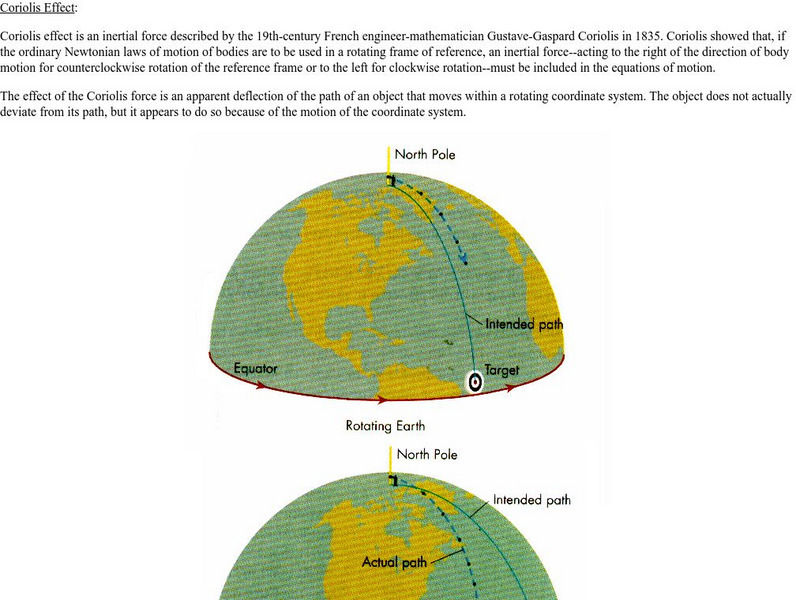Curated OER
Weather Prediction 2
In this weather worksheet, learners are given a weather map of the United States and they answer four questions. They predict the weather in two cities based on the map.
Oklahoma Mesonet
University of Oklahoma: High and Low Pressure
This University of Oklahoma meteorology tutorial explores both high and low pressure systems--how they form and the different forms they take.
Other
Bureau of Meteorology: The Weather Map
Explains what a weather map is and how it is prepared. Describes what weather maps show, typical weather patterns in Australia, the use of weather charts, temperature, and wind speed.
Libre Text
Libre Text: Geostrophic Balance
Geostrophic balance is arguably the most central concept in physical oceanography and dynamical meteorology. A key feature of geostrophic balance is that rather than flowing from high to low pressure, the fluid actually moves parallel to...
University of Oregon
University of Oregon: Coriolis Effect
This site from the University of Oregon provides a great explanation of the Coriolis Effect and then gives several chart type examples to help the understanding of it.
ClassFlow
Class Flow: Geographical Skills
[Free Registration/Login Required] In this lesson students understand how physical processes (weathering, erosion, climates, soils, and landforms) shape earth's surface patterns and systems.
Educaplus (Jesús Peñas Cano)
Educaplus: Transformaciones Termodinamicas [In Spanish]
Observe the difference between the isobars, isotherms, adiabatic, and isocore transformations.








![Educaplus: Transformaciones Termodinamicas [In Spanish] Activity Educaplus: Transformaciones Termodinamicas [In Spanish] Activity](https://content.lessonplanet.com/knovation/original/366823-971322fb111d96f255f8c660d203ed63.jpg?1661772971)